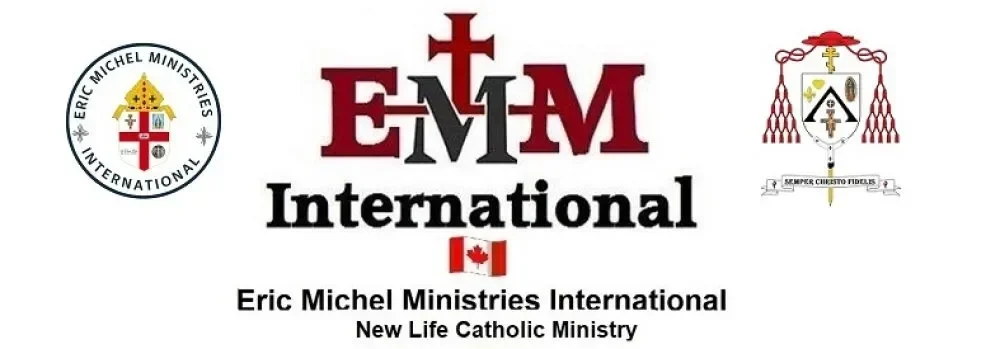The Seven Sacraments refers to two series of paintings of the Seven Sacraments by the French painter Nicolas Poussin.
Painted between 1637 and 1640, the first series was commissioned by Cassiano dal Pozzo in the second half of the 1630s and was sold to the Dukes of Rutland in 1784. One of the seven, Penance, was destroyed in a fire at the Rutlands’ Belvoir Castle in 1816, and Baptism was acquired by the National Gallery of Art in Washington, DC, in 1939, where it still resides. The remaining five were still at Belvoir Castle at the time when Anthony Blunt wrote his catalogue in 1966 and then was on loan to the National Gallery in London until November 2010, when all five of these paintings were taken off the show before the attempted sale of Ordination on 8 December that year. Ordination was ultimately purchased by the Kimbell Art Museum for US$24.3 million and was displayed for the first time there on September 14, 2011. In 2013, the Fitzwilliam Museum in Cambridge purchased Extreme Unction. In January 2023, an export licence was issued for Confirmation, which was sold abroad. In 2024, the National Gallery in London acquired the Eucharist. Marriage remains in the collection of the Trustees of the Duke of Rutland’s 2000 Settlement and is currently on loan to the National Gallery in London.
The images linked to below are of the remaining six paintings of the first series and an engraving of the lost painting Penance.
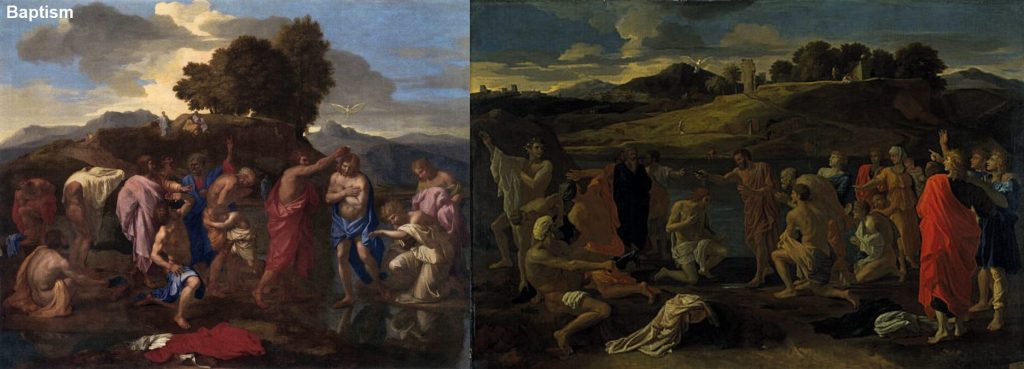
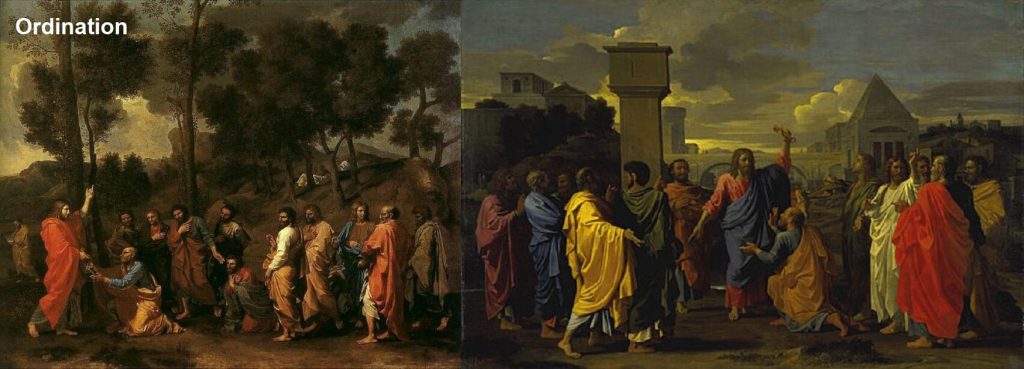

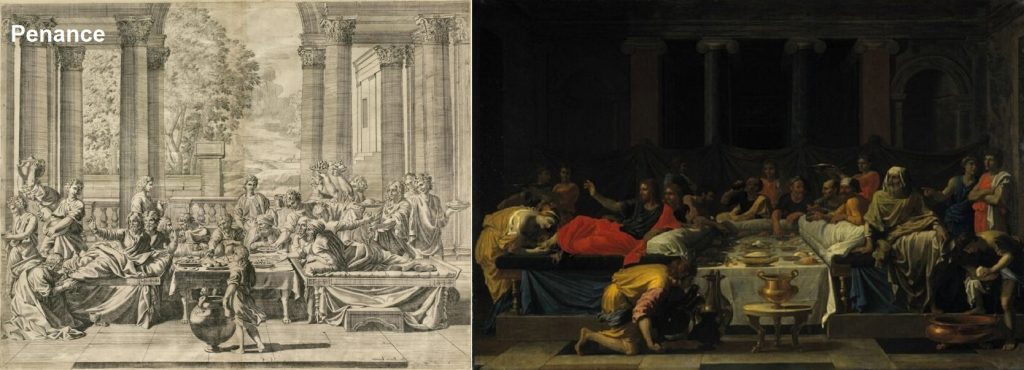
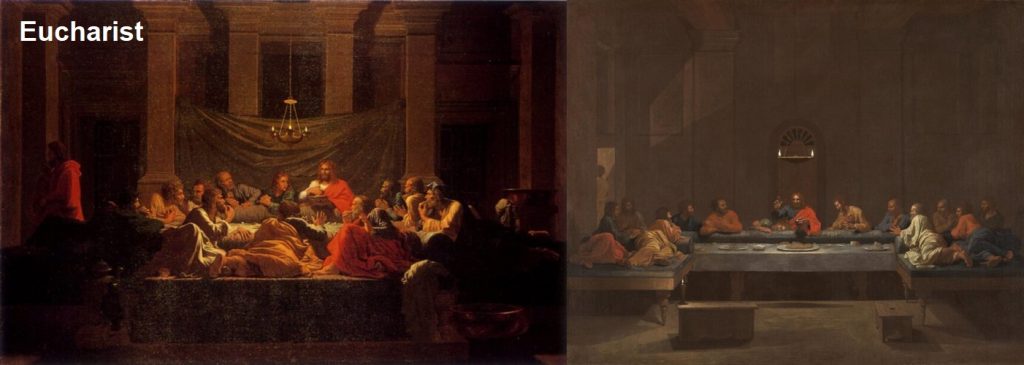
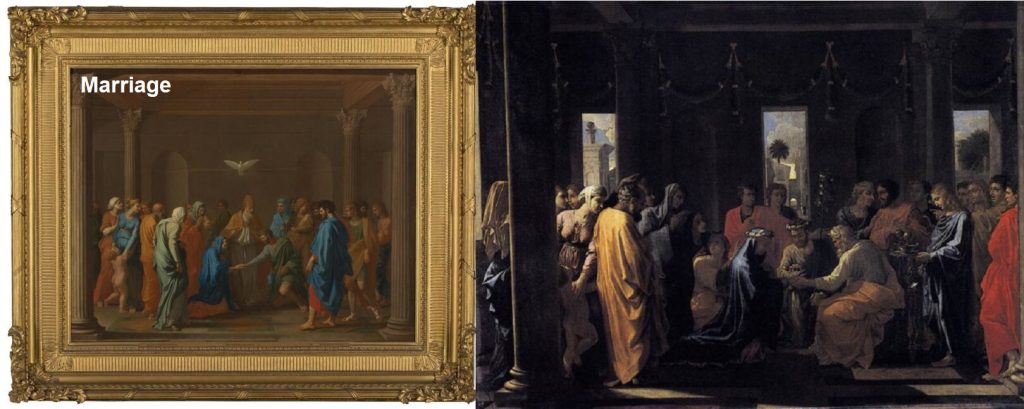
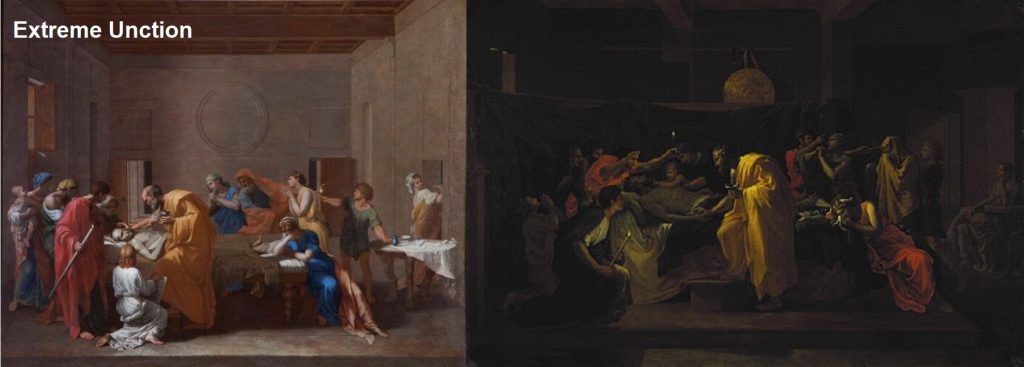
https://en.wikipedia.org/wiki/List_of_paintings_by_Nicolas_Poussin
https://en.wikipedia.org/wiki/Seven_Sacraments_(Poussin)
Nicolas Poussin (June 1594 – 19 November 1665) was a French painter who was a leading painter of the classical French Baroque style, although he spent most of his working life in Rome. Most of his works were on religious and mythological subjects painted for a small group of Italian and French collectors. He returned to Paris briefly to serve as First Painter to the King under Louis XIII and Cardinal Richelieu but soon returned to Rome and resumed his more traditional themes. In his later years, he gave growing prominence to the landscape in his paintings. His work is characterized by clarity, logic, and order, favouring line over colour. Until the 20th century, he remained a significant inspiration for classically oriented artists such as Jacques-Louis David, Jean-Auguste-Dominique Ingres and Paul Cézanne.
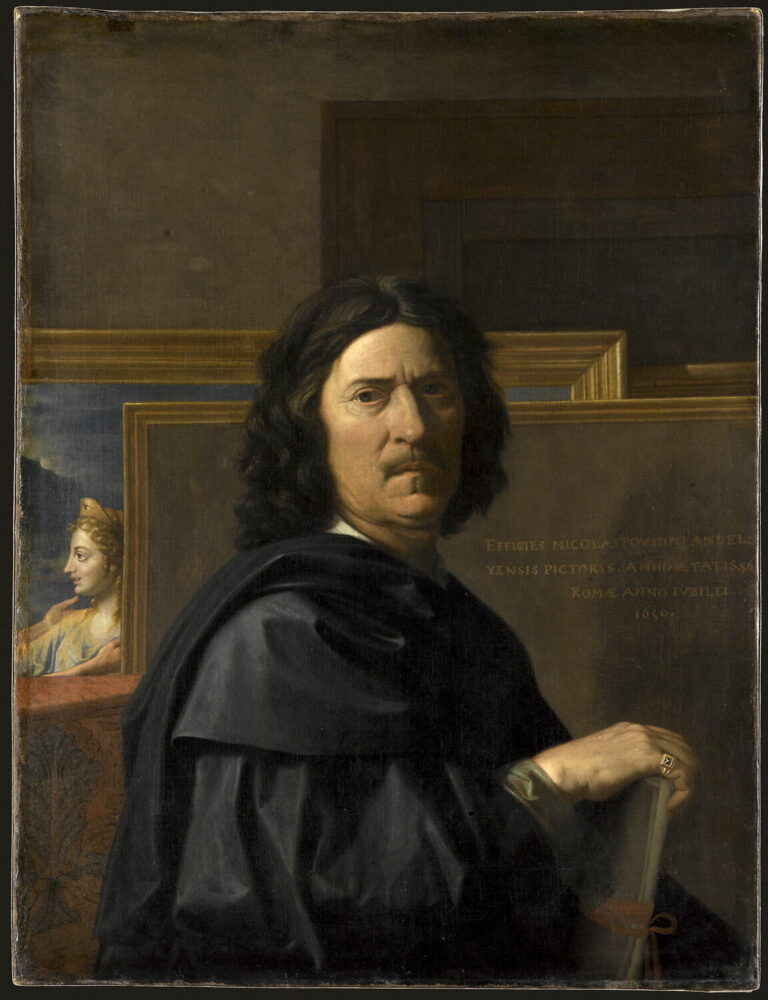
Details of Poussin’s artistic training are somewhat obscure. Around 1612, he travelled to Paris, where he studied under minor masters and completed his earliest surviving works. His enthusiasm for the Italian works he saw in the royal collections in Paris motivated him to travel to Rome in 1624, where he studied the works of Renaissance and Baroque painters, especially Raphael, who had a powerful influence on his style. He befriended several artists who shared his classicizing tendencies and met essential patrons, such as Cardinal Francesco Barberini and the antiquarian Cassiano dal Pozzo. The commissions Poussin received for modestly scaled paintings of religious, mythological, and historical subjects allowed him to develop his style in works such as The Death of Germanicus, The Massacre of the Innocents, and the first of his two series of the Seven Sacraments. He was persuaded to return to France in 1640 to be the First Painter to the King but, dissatisfied with the overwhelming workload and the court intrigues, returned permanently to Rome after a little more than a year. The essential works from his later years are Orion Blinded, Searching for the Sun, Landscape with Hercules and Cacus, and The Seasons.
